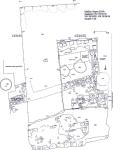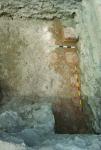Summary (English)
CARIA (Boyan Ivanov – b_totev@abv.bg, Dobri Dobrev, Varbin Varbanov) The northern wall of the early southwestern fortification tower of the 5th – 6th centuries AD was discovered. The later fortification tower followed the outline of the earlier one and was constructed of uneven stones. Three dolia were documented in front of the northern and western outer faces of the later tower. The finds dated predominantly to the 6th century AD and included two coins, sherds from amphorae and fragments from terracotta lamps. In 1995 – 1996, part of a building with a hypocaust of the 2nd – 3rd centuries AD was discovered inside the later fortification tower. In 2019, the extension of the building was excavated. Its southern wall was 84 cm wide, built of uneven stones bonded with mortar. The floor plaster of mortar of the hypocaust was discovered. A stratum with finds of the Hellenistic period was documented below. The pilae of the hypocaust were situated 26 cm apart. Sherds and a fragmentary terracotta lamp were found. So far, 15 coins of the Hellenistic period and 25 amphora stamps from Heraclea Pontica, Thasos, Sinope and Rhodes of the 4th – first half of the 2nd centuries BC were found on the site. In 2019, two rooms in a Late Hellenistic building were excavated. Their walls were 55 – 60 cm wide, built in rubble masonry. Two pits of the 3rd – 2nd century BC were discovered. The finds of the Hellenistic period included fragmentary terracotta figurines, an arrowhead, a fibula of the Thracian Type of the 4th – 3rd century BC, lead weights and clamps, a small bronze bell, fragments from two terracotta lamps, sherds from imported West Slope Pottery. In addition, the finds from 2019 included 16 coins and eight amphora stamps from Heraclea Pontica, Rhodes, Thasos and Sinope. About 30% of the discovered sherds dated to the Hellenistic period, 10% to the Roman period and 60% to Late Antiquity.
- Boyan Ivanov - Regional Museum of History – Dobrich
- Dobri Dobrev - Museum of History – Kavarna
- Varbin Varbanov - Regional Museum of History – Ruse
Director
- Boyan Ivanov - Regional Museum of History – Dobrich
- Dobri Dobrev - Museum of History – Kavarna
- Varbin Varbanov - Regional Museum of History – Ruse
Team
Research Body
- Museum of History – Kavarna
- Regional Museum of History – Dobrich
- Regional Museum of History – Ruse






![Download [PDF]](/excavation/skins/fasti/images/results/download_sml.png)


